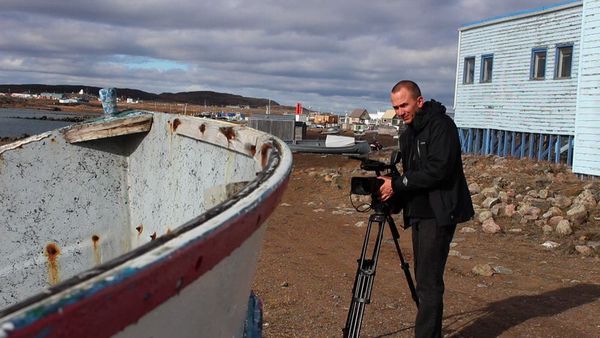Eye For Film >> Movies >> On the Trail Of The Far Fur Country (2014) Film Review
On the Trail Of The Far Fur Country
Reviewed by: Jennie Kermode

In 1919, the documentary as we know it today had yet to be invented, but there was enormous excitement about the potential of cinema to tell stories about faraway parts of the world. Only a tiny proportion of the population could afford to travel, and the only way anybody got to visit the far north was to go and work there. The fur trade was then at its height, with skins purchased from indigenous peoples and transported to the catwalks and boutiques of the big cities. To document this process, the Hudson Bay Company sent a film crew by boat, dog sled and on foot into the wilds. They recorded a huge amount of material and wrote poignant letters home; but after a brief cinema release, their film was forgotten. In 2011, it was rediscovered in the archives and a second film crew set out in the footsteps of the first, eager to learn what had changed in the near-century in between.
It's an intriguing premise, and no time is wasted here on theatrical reconstructions of the way the first crew travelled; their records tell of their arduous trip and we see the train, the bridge, the new infrastructure that has since cut journey time from weeks to hours. It's at the end of the trip that the really fascinating opportunities await, as we meet the descendants of the local people captured in the original film. None of them have seen it, but some have stills from it, handed down, and say that watching it is like seeing them come to life. A few can identify relatives in it, people they only knew as old folk; others know their relatives must be there but are uncertain who they are. Then there are buildings, cultural artefacts, activities - some still present,some looked back on nostalgically, and some - most disturbingly - entirely forgotten, their purpose now unknown.

It's not all one way. These are a deeply religious people, the old film tells us, as folk file out of the church. According to the amused locals, few of them have since gone back. The imposed Christianity didn't stick; the fondness for the old ways did, even if details were lost. As individuals are interviewed or described in the old film, their descendants fill in their stories, imbuing them with a three dimensionality those carefully framed portraits lack. It's clear that the early filmmakers liked the locals and were genuinely interested in them, but there was an undercurrent of unexamined racism in their assumed role as civilisers, as saviours. The money they brought had its uses but the trade didn't last. Now the factory stands empty. Their usefulness to the global economy has passed.
The new film crew talk openly about the issues they faced in deciding which bits of film to include. There is little sense of the result having been sanitised. It's a brutal story, though full of good intentions and remembered with some affection. It's also a fascinating picture of changes that impacted far beyond the Arctic.
Reviewed on: 29 Jan 2015















